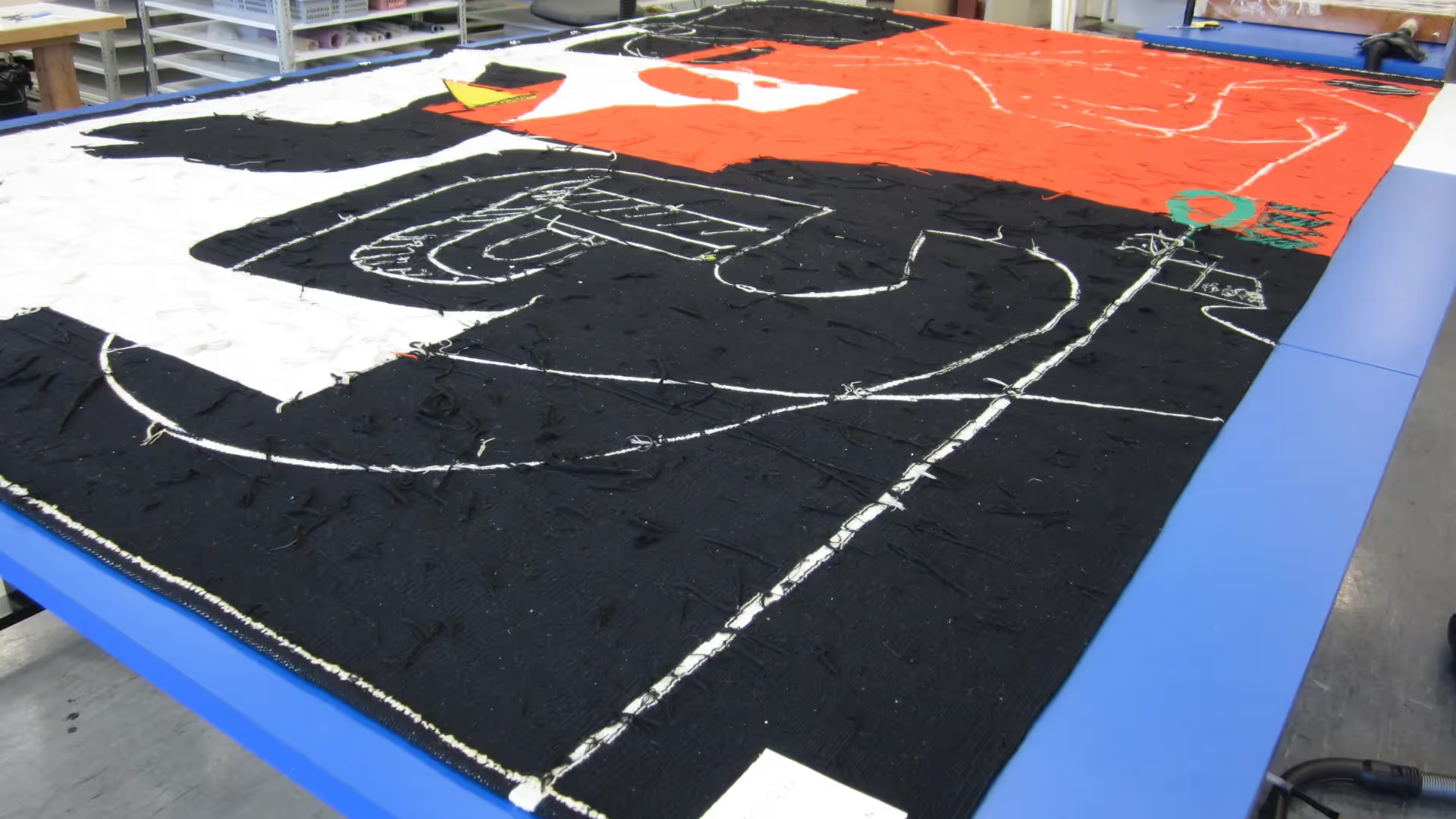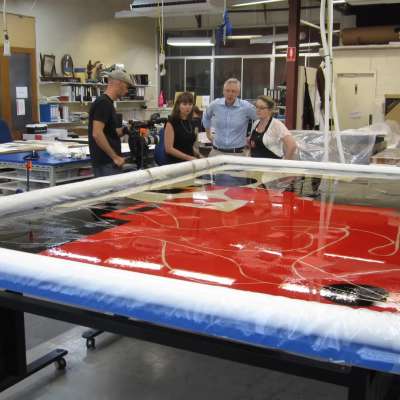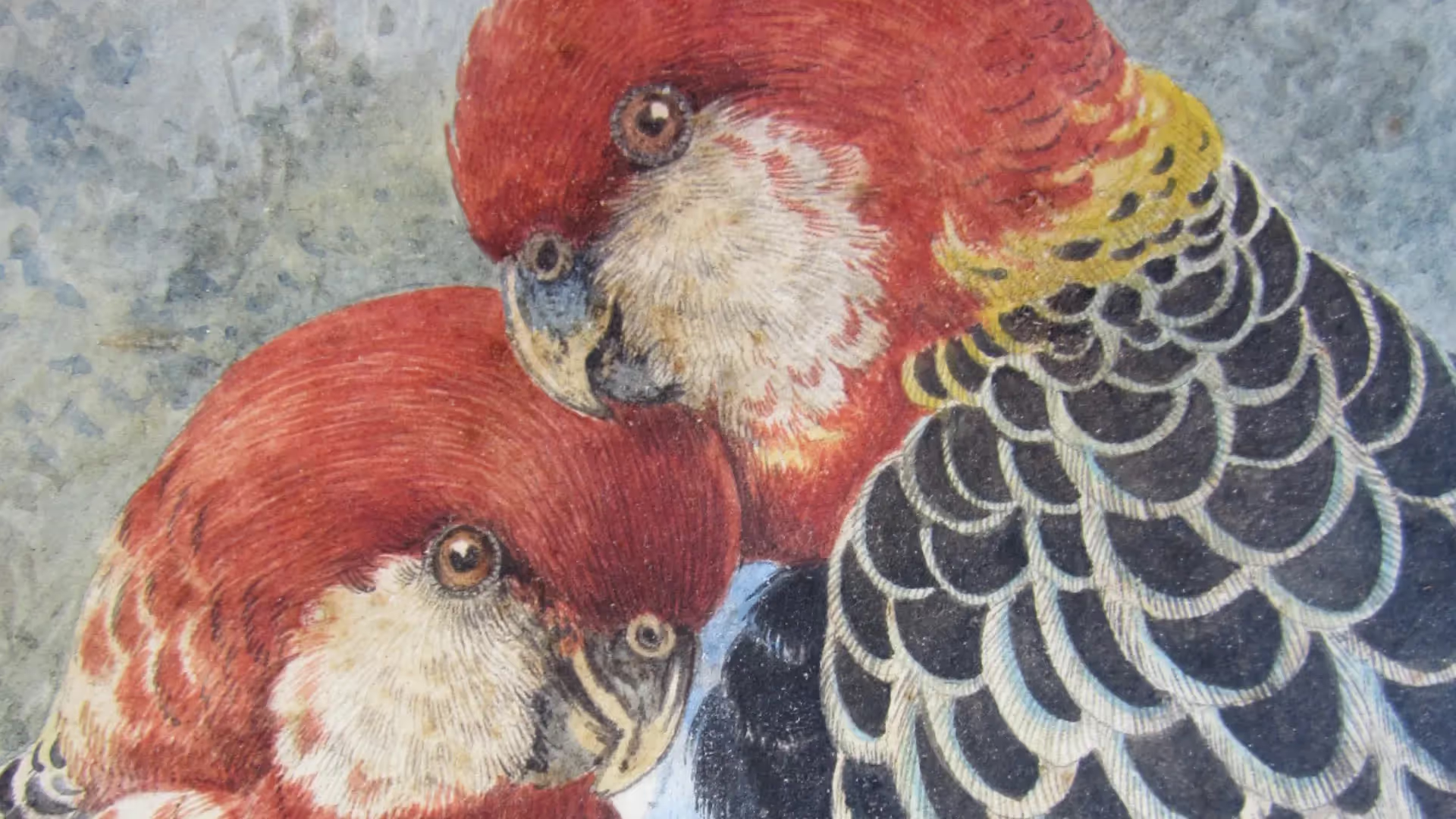Condition
Having hung in the Utzon family dining room for several decades, the piece was in need of cleaning and repair. Once it arrived back in Sydney, ICS was called upon to restore it, advise on display conditions, and finally manage the installation.
Treatment
Treatment - conservation
After initial surface cleaning, tests were carried out to ensure that the dye colours wouldn’t run when the piece was submerged in water. A custom-made tub was then built to enable the washing, and the detergent and water used had to be carefully selected and mixed to ensure the correct PH levels.
Treatment- display
ICS was also involved in the installation process – providing advice on the best type of display case and lighting for the tapestry, as well as physically hanging the piece in its new location in the Western Foyer of the Opera House.
Before treatment
After treatment



.webp)



.avif)


